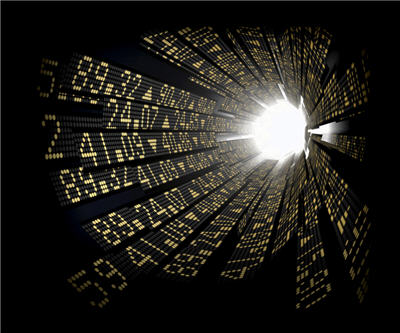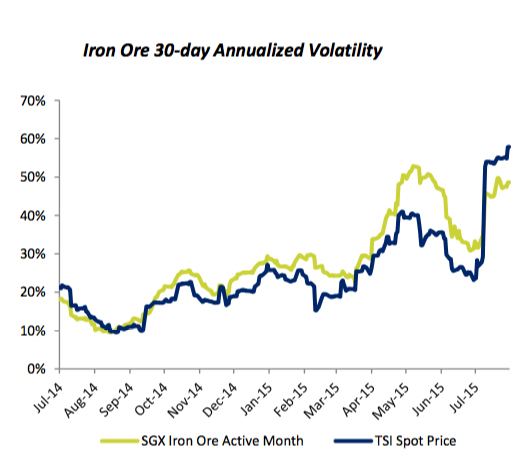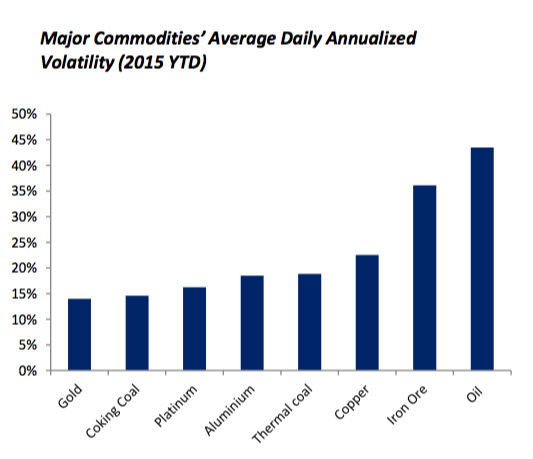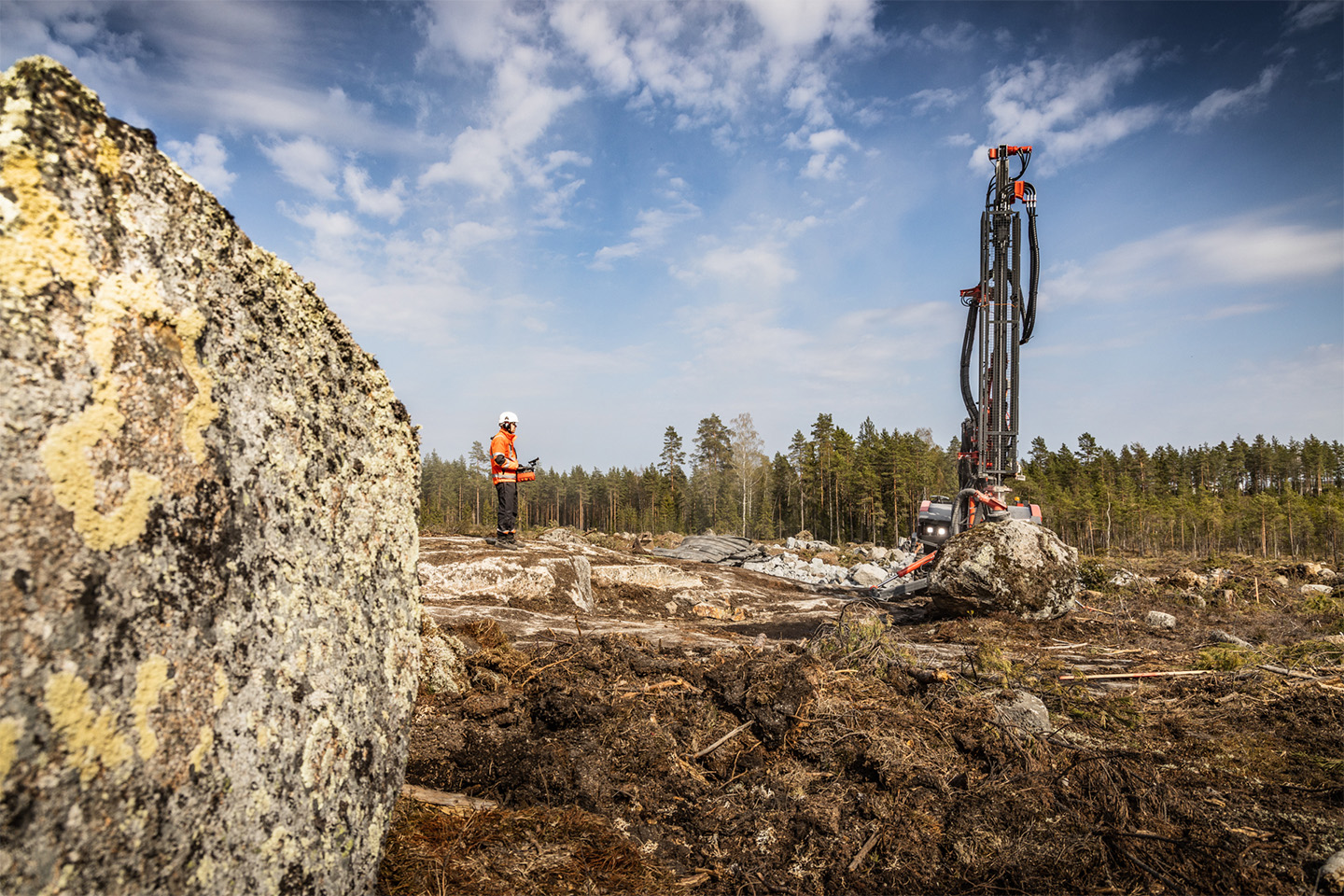CHARTS: Iron ore price only getting more volatile

Iron ore’s recent rally appears to have some legs with the steelmaking ingredient holding onto 28% gains since hitting a record low of $44.10 on July 8.
Despite the strong recent showing, the iron ore price is still down 20% in 2015. And that’s after nearly halving over the course of 2014.
After 2011 and 2012’s ups and downs, during the second half of 2013, ore was pegged between $130 and $140 a tonne for 148 days straight. The decline last year was also at a relatively steady pace.
But new data from the Singapore Exchange, the first to launch iron ore derivative contracts in April 2009, shows price volatility is now back with a vengeance.

Source: SGX
And traders in other commodities – bar crude oil – are coasting compared to the wild swings ore traders have to contend with on a daily basis.

Source: SGX
It wasn’t always thus.
The SteelIndex, a unit of Platts, first started tracking the spot price in November 2009.
Before the emergence of quarterly contract pricing and eventually a spot and futures price, the seaborne trade was controlled by the Big 3 producers – Vale, Rio Tinto and BHP Billiton – which set prices during secretive negotiations with Japanese steelmakers and signed annual contracts.
The annual contract price of iron ore had never strayed far from $10 – $14 per tonne since the 1970s. Then at the end of 2004 all hell (for Chinese steelmakers that is) broke loose.
After months of tough – often acrimonious – benchmark negotiations, the 2005 price was hiked a whopping 71.5%, marking the start of a supercycle and the beginning of the end of the old pricing system. But a tonne of ore was still only $28.11.
From 2005 onwards signs of ore shortages were everywhere as China’s 500 licensed importers chased tonnage on the sidelines of the global trade and buy fines for as much as three times the benchmark contract price, still pegged at less than $40.
During 2008 negotiations the contract price was upped 68%, but the majors continued to lose out on billions under annual contract pricing. Growing Chinese port stockpiles saw action in the industry shift to mills and traders, ushering in the era of rapidly rising and volatile prices.
In a push by BHP Billiton CEO Marius Kloppers (against the wishes of his larger competitors), 2009 saw the collapse of the old benchmark system and at the same time a move away from a free-on-board pricing system to one where miners accept freight costs (and the profits they can make off them).
The spot price scaled $100 for the first time in November 2009 and on February 16 2011 reached an all-time high of $191.90 a tonne.
While a price near $200 a tonne is out of whack as the graph shows, at today’s prices iron ore is cheap compared to bellwether metals copper and gold.

Source: Port Jackson Partners
{{ commodity.name }}
{{ post.title }}
{{ post.date }}


Comments